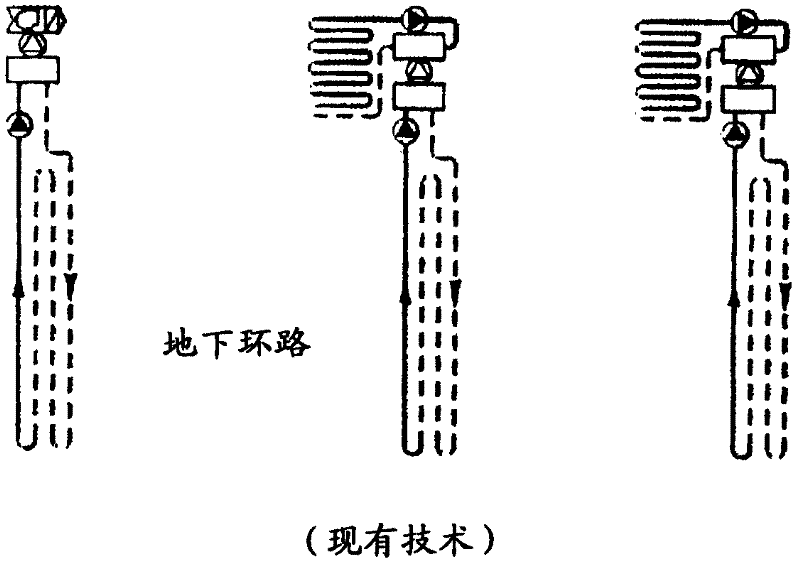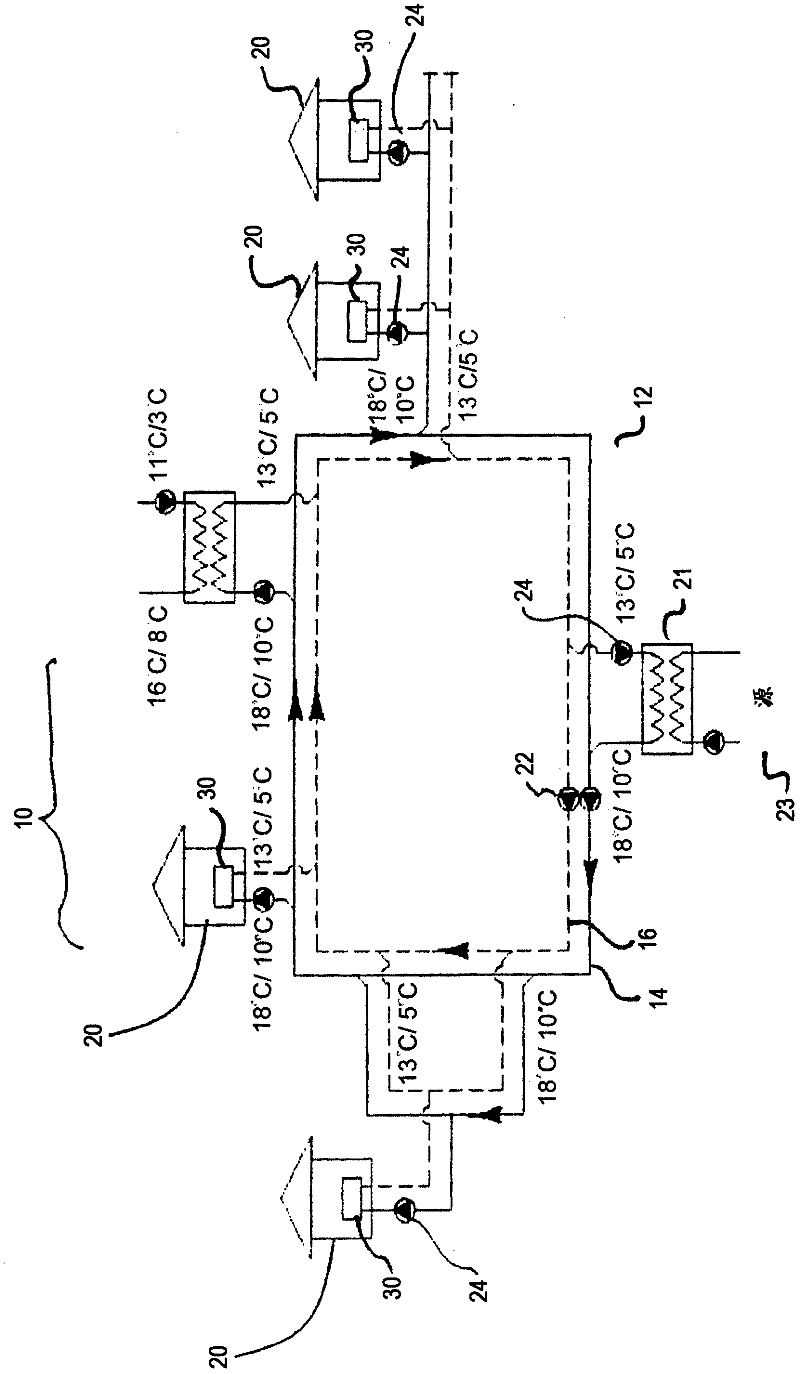District energy sharing system
A technology for sharing system, district energy, applied in district heating system, heating system, energy-saving heating/cooling, etc., can solve problems such as hindering efficient operation
- Summary
- Abstract
- Description
- Claims
- Application Information
AI Technical Summary
Problems solved by technology
Method used
Image
Examples
Embodiment Construction
[0029] refer to image 3 And according to one embodiment, a district energy sharing system (DESS) 10 includes: a thermal energy loop 12 that circulates and stores thermal energy in water; at least one customer building 20 that is thermally coupled to and diverts some of the thermal energy from the loop 12 (“cooling source ”) and / or deposit some thermal energy (“heat source”) into loop 12 (note: customer building 20 shown in this figure is shown drawing thermal energy only from loop 12 and therefore both operating as a sink); and at least A thermal server plant 21 , can be thermally coupled to external heat and / or cooling sources (eg geothermal underground sources) and its function is to maintain thermal balance within the DESS 10 . DESS 10 may also include a networked control and monitoring system (not shown) for regulating, measuring and optimizing thermal energy delivery during system operation.
[0030] The circuit 12 includes a pair of water conduits 14, 16 that respectiv...
PUM
 Login to View More
Login to View More Abstract
Description
Claims
Application Information
 Login to View More
Login to View More - R&D
- Intellectual Property
- Life Sciences
- Materials
- Tech Scout
- Unparalleled Data Quality
- Higher Quality Content
- 60% Fewer Hallucinations
Browse by: Latest US Patents, China's latest patents, Technical Efficacy Thesaurus, Application Domain, Technology Topic, Popular Technical Reports.
© 2025 PatSnap. All rights reserved.Legal|Privacy policy|Modern Slavery Act Transparency Statement|Sitemap|About US| Contact US: help@patsnap.com



